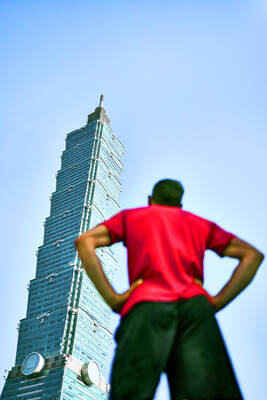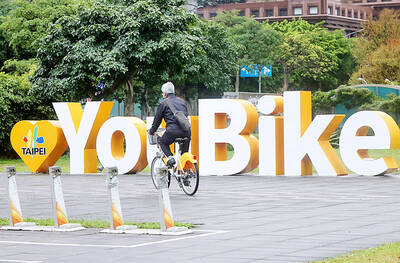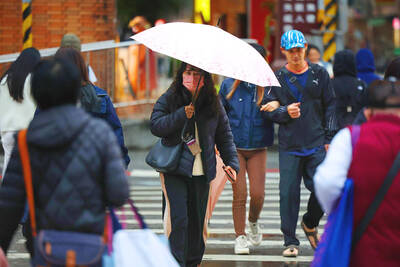President Ma Ying-jeou (馬英九) yesterday praised the Kinmen Agreement signed by Taipei and Beijing 20 years ago for establishing a way to peacefully resolve cross-strait issues, adding that this model continues to be used, as is shown by the signing of the Economic Cooperation Framework Agreement (ECFA).
The Kinmen Agreement was signed by the Red Cross from both sides of the Taiwan Strait on the Kinmen islets on Sept. 12, 1990. Representatives discussed the thorny issue of repatriating criminals, smugglers or fugitives under the spirit of humanity and practicality.
“This was the first time authorities on both sides of the Taiwan Strait openly resolved problems in a peaceful manner,” Ma said in his weekly video address.
“It set the model of cross-strait negotiations: seeking common ground while reserving differences,” he said.
In the video, Ma conversed with Red Cross Society of the Republic of China head C.V. Chen (陳長文) to mark the 20th anniversary of the accord.
Chen said once the main direction of bilateral negotiations was set, the rest was easy.
If there were any difficulties when the two sides inked the 1990 agreement, Chen recalled there were two technical problems both sides needed to iron out.
First was the title of the signatories, he said, and the two sides decided to steer clear of politically sensitive terms such as the Republic of China or People’s Republic of China.
“Had we dwelled on that issue, we would not have accomplished anything,” he said.
Second was the year appearing on the pact, he said. Chen said the two sides decided that Taiwan used the Republic of China calendar year, while China used the Gregorian calendar.
Ma recognized both sides for making efforts to “face reality, shelve disputes and create a win-win scenario.”
He added he was glad that such a model continues to be used today and cited the ECFA as the most recent example.

US climber Alex Honnold is to attempt to scale Taipei 101 without a rope and harness in a live Netflix special on Jan. 24, the streaming platform announced on Wednesday. Accounting for the time difference, the two-hour broadcast of Honnold’s climb, called Skyscraper Live, is to air on Jan. 23 in the US, Netflix said in a statement. Honnold, 40, was the first person ever to free solo climb the 900m El Capitan rock formation in Yosemite National Park — a feat that was recorded and later made into the 2018 documentary film Free Solo. Netflix previewed Skyscraper Live in October, after videos

Starting on Jan. 1, YouBike riders must have insurance to use the service, and a six-month trial of NT$5 coupons under certain conditions would be implemented to balance bike shortages, a joint statement from transportation departments across Taipei, New Taipei City and Taoyuan announced yesterday. The rental bike system operator said that coupons would be offered to riders to rent bikes from full stations, for riders who take out an electric-assisted bike from a full station, and for riders who return a bike to an empty station. All riders with YouBike accounts are automatically eligible for the program, and each membership account

NUMBERS IMBALANCE: More than 4 million Taiwanese have visited China this year, while only about half a million Chinese have visited here Beijing has yet to respond to Taiwan’s requests for negotiation over matters related to the recovery of cross-strait tourism, the Tourism Administration said yesterday. Taiwan’s tourism authority issued the statement after Chinese-language daily the China Times reported yesterday that the government’s policy of banning group tours to China does not stop Taiwanese from visiting the country. As of October, more than 4.2 million had traveled to China this year, exceeding last year. Beijing estimated the number of Taiwanese tourists in China could reach 4.5 million this year. By contrast, only 500,000 Chinese tourists are expected in Taiwan, the report said. The report

Temperatures are forecast to drop steadily as a continental cold air mass moves across Taiwan, with some areas also likely to see heavy rainfall, the Central Weather Administration (CWA) said. From today through early tomorrow, a cold air mass would keep temperatures low across central and northern Taiwan, and the eastern half of Taiwan proper, with isolated brief showers forecast along Keelung’s north coast, Taipei and New Taipei City’s mountainous areas and eastern Taiwan, it said. Lows of 11°C to 15°C are forecast in central and northern Taiwan, Yilan County, and the outlying Kinmen and Lienchiang (Matsu) counties, and 14°C to 17°C